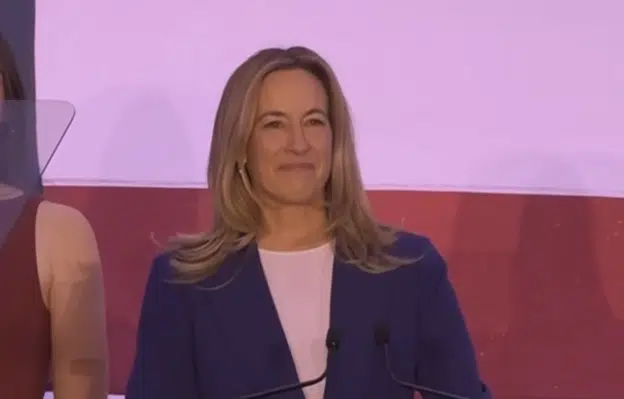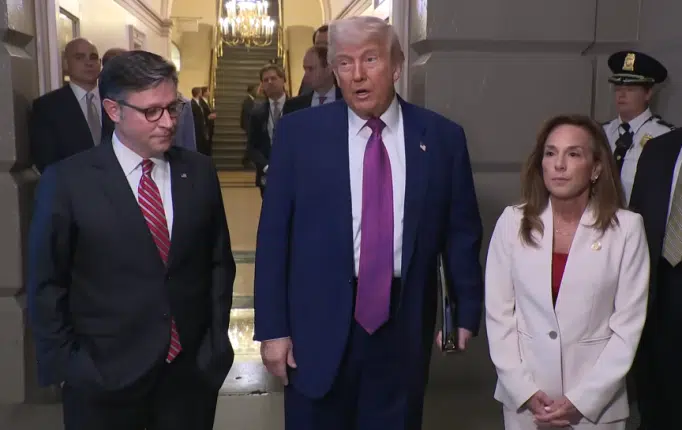
The U.S. unemployment rate in July rose to its highest level since November 2021 at 4.248 percent according to data compiled by the Bureau of Labor Statistics. The number of people employed also contracted 260,000 to 163.1 million, its lowest level this year after reaching 163.96 million in April.
This is what usually happens when inflation declines historically — after falling from its 9.1 percent peak in June 2022 now at 2.7 percent — as demand comes out of the economy, usually amid higher interest rates. On that count, the Federal Reserve has been more than willing to provide those, albeit on a belated basis, not hiking rates until March 17, 2022 — by then inflation had already reached 8.5 percent — after being zero-bound during the brief Covid recession.
So, it’s neither surprising to see the unemployment level rising, or new, as it’s increasing since January 2023 by almost 1.49 million to its current 7.236 million.
On slowing, as the economy contracted slightly in the first quarter following the Biden overheating, so too did consumer credit contract in the first quarter by 0.6 percent according to the Federal Reserve Board of Governors. The money supply has also been largely flat, only growing $270 billion since April 2022 to $22.02 trillion after growing $6.3 trillion for Covid beginning in February 2020 through the first quarter of 2022. When prices are too high, Americans slow down purchases, the economy can stall and the unemployment rate usually goes up.
Which is when the Fed usually cuts interest rates. But holding out for tariffs, nearly finalized by President Donald Trump and seeing what price hikes — if any, as import prices actually decreased in the second quarter according to the Bureau of Economic Analysis — come is Federal Reserve Chairman Jerome Powell. Thanks to the recent decrease, even if there were a one-time price hike from the tariffs, there’s an offset.
The President’s replacement of the Biden-appointed commissioner at the Bureau of Labor Statistics, Erika McEntarfer, notwithstanding — it would be surprising if the position were not changed following the November 2024 election — if the July unemployment report made one thing clear, it’s that the Fed has room to cut rates.
Another move the Fed has not yet initiated but could also help with interest rates might be to resume purchasing treasuries, another historical go-to, particularly during the two most recent mega recessions.
It could just be Powell is waiting for a recession. One item keeping unemployment rather low historically speaking is the Baby Boomer retirement wave still being experienced, with about 900,000 seniors leaving the labor force every year and reaching an all-time high of 50 million for the first time in July.
Perhaps future recessions might have lower highs in joblessness amid the labor shortages being experienced amid declining birth rates and an aging workforce. In Japan, unemployment only rose to 3.1 percent during the Covid recession — all while keeping rates zero-bound, with government bonds occasionally selling for negative interest rates.
It could also be a case of being careful what you wish for. The rising unemployment is also coming off of a 10-year, 2-year treasuries rates un-inversion and so as the yield curve normalizes, usually it occurs at the same time as increased joblessness.
When, not if, the Fed begins cutting rates anew, it might be amid more pain and perhaps higher unemployment. If so, politically, it’s usually better to get it over with early in a presidential term. Richard Nixon, Ronald Reagan, George W. Bush and Barack Obama all had recessions that ended early in their terms and the incumbents went on to win the following elections, while Gerald Ford, Jimmy Carter, George H.W. Bush and Trump’s first term all had recessions in the third or fourth years of their terms, and the incumbents lost. Anything could happen, of course. As usual stay tuned.
Robert Romano is the Executive Director of Americans for Limited Government Foundation.






